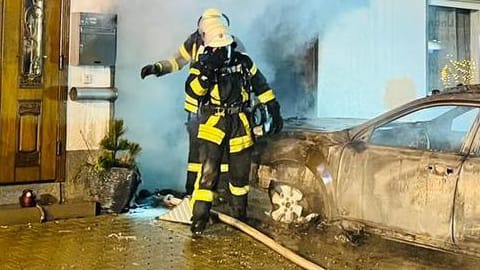INTERIA.PL Business on Twitter. Join us and read the economic news
The initial offer submitted to the Polish government in October 2021 included, among other things, the cost of building 4 or 6 EPR reactors. This is called the overnight cost – excluding financing costs.
Ramana told PAP that the offer was supplemented by a special letter from the then French Finance Minister, who, on behalf of the French government, announces support for the EDF, and at the same time announces France’s readiness to become Poland’s strategic partner in the nuclear project, and to search for various financial instruments to finance the entire program.
The Polish government expects that the partner in the nuclear program will also get 49 percent. Shares in a private company will provide sufficient financing and will participate not only in the construction but also in the operation of nuclear power plants.
Ramani said the French government has clearly stated its willingness to consider different ways to provide support, which is expected by the Polish side. – There are various methods, especially equity, i.e. direct injection of capital or debt financing. France is ready to find a solution here – confirmed the vice-president of the EDF.
– EDF and the French government are open to discussions with the Polish government about who and what type of funding will be provided. What will be the structure of the financing and its distribution among shareholders – and this requires further discussions – Ramani added.
He pointed out that France has a number of institutions that support such programs. In debt financing, we have strong export credit insurance. This in turn helps in attracting banks to borrow for such projects. With regard to debt, we have, for example, the Public Development Bank SFIL, which can refinance debt at a relatively low cost. This opens the way for obtaining debt financing – explained the vice president of the EDF. He added, there are also institutions that can provide capital, depending on the strategic importance of the project. – So, in terms of capital and debt, France has a number of tools that can support the Polish project – assessment of Vakis Ramani.
Thierry Deschaux, director of the Warsaw office of EDF, told PAP that France has extensive experience in financing large projects in the energy sector, such as nuclear power plants and hydropower, and is ready to help the Polish government improve the financing of this project.
“EDF’s offerings are integrated, we provide the entire field of engineering, equipment, construction, operation and service support, and training of personnel who will build and operate the power plant,” Deshaw explained.
He also added, the integrated nature of the offer means that the Polish authorities will have only one partner in the entire process. – This allows, for example, to avoid risks related to the presence of several contractors and the relationship between them. We are the only company that offers such a possibility – confirmed Director Deschaux.
According to him, France is the only potential bidder who can provide 100%. European technology “developed in European factories by European companies”.
The supply chain will also be European. This is our great advantage. Such a choice would also be an important step towards energy independence. Thierry Deschaux added that we have experience not only from France but also from the UK on how to create a high local share in our supply chain.
According to the results of the PAP, in its presentation EDF Concerns have estimated that building four EPR reactors with a capacity of 1,650 MW each would cost around €33 billionin the case of building 6EPR amounting to 48.5 billion euros.
According to PPEJ, Poland plans to build modern, but proven and large PWR reactors. Polish energy policy until 2040 assumes that in 2033 the first block of the Polish nuclear power plant with a capacity of about 1-1.6 GW will be put into operation. The following blocks will be carried out every two or three years, and the entire nuclear program includes the construction of six units with a capacity of up to 9 gigawatts.
Check also:





